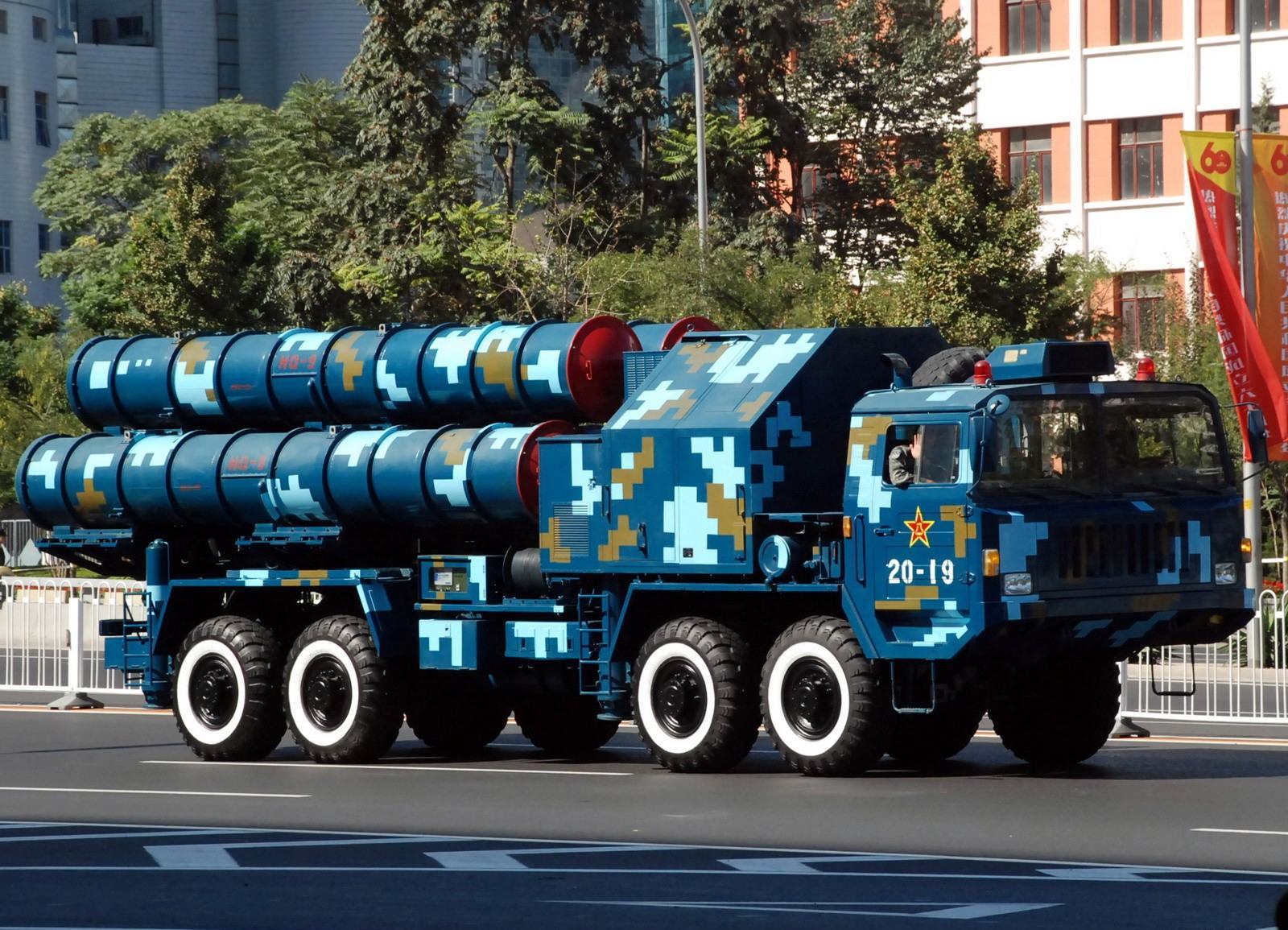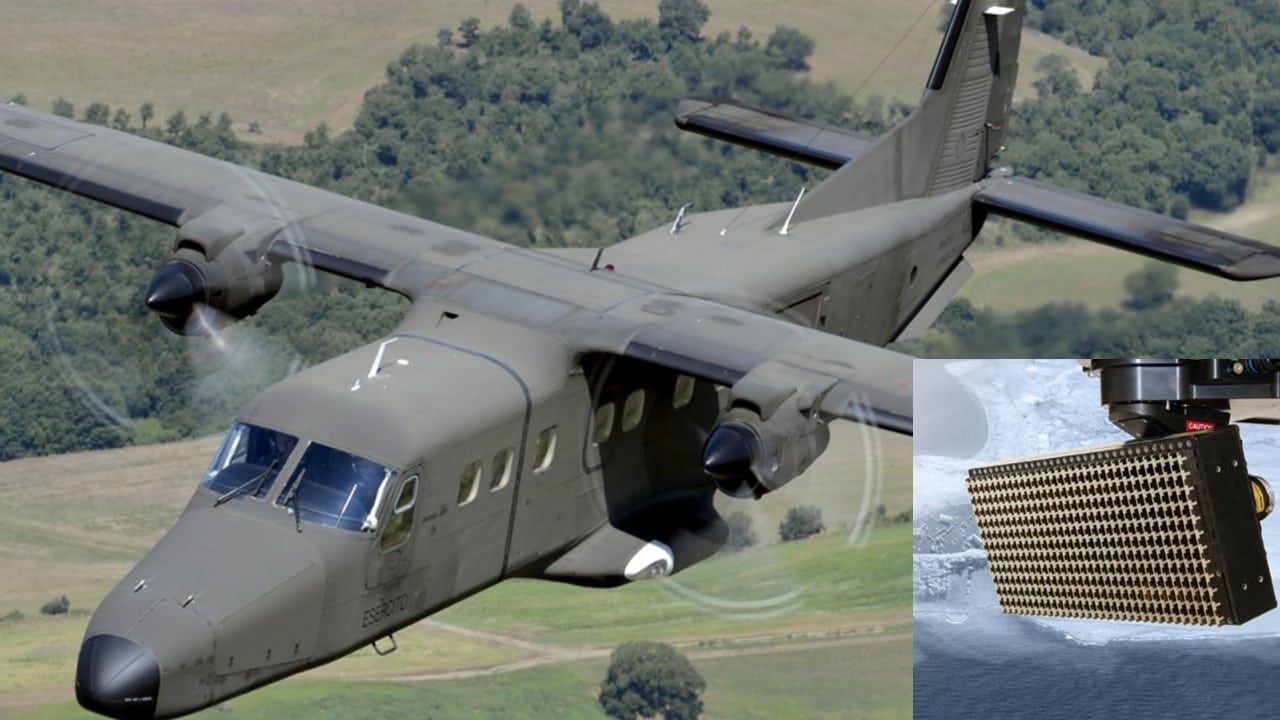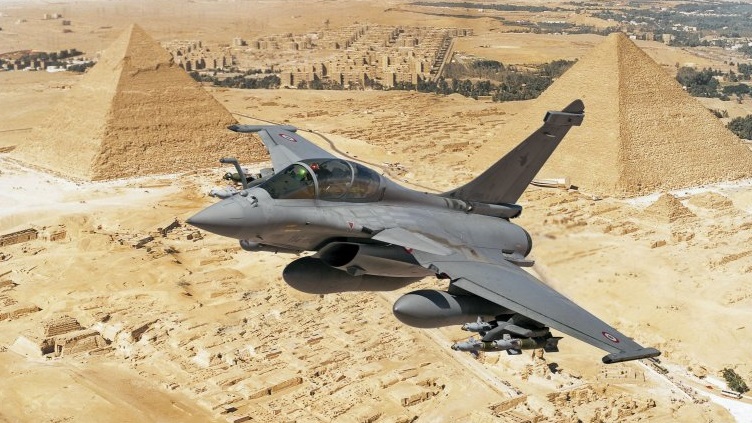3111Views 19Comments

Is Pakistan in talks with China for long-range SAMs?
During a high-profile meeting with two leading Chinese defence vendors, China Aerospace Science and Industry Corporation (CASIC) and China Precision Machinery Import and Export Corporation (CPMIEC), the Pakistani prime minister noted a potential air defence deal in the making with China. According to the Daily Times, Nawaz Sharif stated ‘the decision for induction’ would be made upon receipt of a ‘complete proposal’ from CPMIEC.
It is not clear which CPMIEC air defence system Nawaz Sharif was referring to, but it is worth noting that the Pakistan Air Force (PAF) and Pakistan Army have already ordered HQ-16 and FM-90 surface-to-air missile (SAM) systems, respectively. The HQ-16 is a medium-range SAM system with a maximum range of 40km, and maximum intercept altitude of 10,000 metres. The FM-90 (also known as the HQ-7) has a range of 15km, and a maximum intercept altitude of 6000 metres. The Pakistan Army inducted the FM-90, and three HQ-16 batteries were ordered in late 2014.
Granted, the PAF and/or the Army could be awaiting a new proposal regarding the HQ-16 or FM-90, but it is also possible that the long-awaited push for a long-range SAM system is finally underway. At present, Pakistan’s integrated air defence system (IADS) is comprised of short and medium-range SAMs, with the MBDA Spada 2000 Plus possessing the most range (of over 20km). Unfortunately, the situation on the naval front is a bit worse, the FM-90 and LY-90 systems in use by the Pakistan Navy’s F-22P and Type-21 frigates, respectively, offer less than 20km in range each. The forthcoming HQ-16 will be a significant jump in Pakistan’s IADS coverage by raising its medium-range umbrella.
Pakistan sought a long-range SAM system since the early 2000s, when it was reportedly in talks with China for the acquisition of FT-2000 SAM systems (in response to India’s Phalcon AEW&C purchase from Israel). The FT-2000 is (or at least was) an export-grade HQ-9 tipped with an anti-radiation seeker (which could be used to target airborne radars). Nothing seemed to had come of those talks. In 2013, Pakistan opened talks with China for the purchase of HQ-16 and HQ-9 systems; Pakistan ordered the HQ-16 in late 2014.
Public details about the HQ-9 are scarce, but analysts generally believe it is derived from the Russian S-300PMU, a popular and widely adopted long-range SAM system, with Iran being its newest user. The HQ-9 system comprises of a HT-233 passive electronically-scanned array (PESA) radar, which is used to guide the HQ-9’s missiles to their targets (i.e. semi-active radar homing). An active electronically-scanned array (AESA) radar in the form of the Type 305 was also spotted with the HQ-9 system. The added inclusion of the Type 305-series would infuse the HQ-9 system with highly improved electronic counter-countermeasure (ECCM) capabilities against enemy electronic warfare (EW) jamming.
In terms of the missile, it is believed that the HQ-9 can reach up to 200km, but the export-grade FD-2000 is limited to 125km. The missiles use semi-active radar-homing (SARH) guidance, meaning, they depend on the HT-233 (or Type 305) radar to illuminate the target until impact. There have been reports of active radar-homing and imaging infrared-tipped HQ-9 versions being under development.
Last year, Turkey selected the HQ-9 as part of its own long-range SAM requirement, CPMIEC effectively beat leading Western competitors such as Raytheon and MBDA in order to secure the potential contract. Unfortunately, pressure from the U.S. and NATO apparently pushed Turkey to walk away from the table, prompting it to instead to tap into its own defence industry (i.e. Roketsan) as a means to develop a long-range SAM system. But seeing a NATO power with purchasing power and options select the HQ-9 was a major vote of confidence for CPMIEC and the HQ-9.
Even if one were to assume that Pakistan will acquire the FD-2000 (which has a range of 125km), there is no doubt that the system’s inclusion into Pakistan’s IADS would amount to a much needed and solid upgrade. Pakistan does not possess long-range air defence coverage (its medium-range gap is only now being addressed via the HQ-16). The introduction of the HQ-9 will offer Pakistan additional breathing space in regards to its principal aerial threats. The HQ-9 is also a scalable system, Pakistan could continue upgrading the system’s radars and missiles in the coming years.
Of course, this coverage is from land, there are no firm air defence improvements in place for Pakistan’s maritime theatre just yet. This would require new frigates with vertical launch systems (VLS).
We must caution however that the CPMIEC proposal could refer to other air defence solutions as well. As noted earlier, Pakistan could be inviting a proposal in regards to expanding its medium-range coverage via the HQ-16. But given that the proposal was noted by the Prime Minister, the idea of it being in regards to the HQ-9 or FD-2000 should not be ruled out.
Last month, the Pakistani defence minister, Khawaja Asif, claimed that Pakistan was also exploring the possibility of acquiring SAM systems from Russia. We believed that short-range systems – such as the Pantsir S2 – were on the cards, but Russia may not be the only option being explored. Pakistan could also acquire promising short-range systems from South Africa, Turkey and China as well. The introduction of the HQ-9 (long-range), HQ-16 (medium-range), and a next-generation short-range SAM in the next few years would amount to an impressive air defence overhaul (which should also see new air surveillance radars on land as well as proper naval development as well).



19 Comments
by Abdul Rashid
With the debate on parity, X for X or X for Y deterrence still raging at fever pitch on the submarine thread it might be pertinent to ask, will Pakistan’s acquisition of HQ-9 be a suitable response to India’s proposed procurement of the S-400 system from Russia?
by Bilal Khan - Quwa
Moderation rules are now in effect. *All* off-topic posts, insults, etc, will *not* be approved. Ensure that your comments are (1) constructive, (2) professional, and (3) on-topic. Threads will automatically be closed after 48 hours of posting.
by Bilal Khan - Quwa
Not sure if “counter” is the right term … SAMs don’t fight one another 😉 That said, it is a good way to build some space against the IAF (irrespective of the S-400). There’s an objective value to having a long-range SAM, and I am glad we’re seriously on track to acquiring it.
by jigsaww
I think we still have to see which flavor of HQ9 will Pakistan go for. China has been upgrading it ever since Pakistan first started talks. Pakistan will certainly aim for S-400 type capability at least, and will then have to settle for close enough or similar capability, whatever is possible.
The decision also comes at a time when S-400 sale is on cards to Hindustan. So it will offer Pakistan the same “deterrence”, though the acquisition will make more and more sense if S-400 is a done deal.
Status quo restored.
by Abdul Rashid
Thanks for the correction. Appreciated.
by Abdul Rashid
Hi, MT. Where you been these past few days?
Pakistan’s acquisition and timeframe of HQ-9 itself might be some years away yet. If Pakistan goes for the system at all. The article is speculative at best at this stage.
by Ashi Sidhu
Iran was under sancions hence it had to wait so many years for S 300 which is now very old
china itself is buying S 400 if pakistan is getting HQ 9 then how will it handle future threats such as stealth fighter jets,hypersonic cruise missiles and ballistic missiles
by jigsaww
Pakistan would like to buy S-400, but it’s not available of course.
I think they will have the updated HQ9 ones acquired, more or less in same capability as S-400. China will incorporate S-400 features into it in coming years. Pakistan will have choice to keep upgrading to newer versions.
5th gen introduction in south asia is 10 years away.
Both air forces will have more or less same problems penetrating each others’ air space.
by MT
1. HQ9 is no way comparable to S-300
It is heavy, low manourable & lacks Terminal seekers. Radar is PESA which have huge radar signature
2. China will not be given any tech access to S-400- Russian companies have introduced new hardware lock features to deny chinese any access for rev engineering
3. China is decade away from developing adopting s-400 features
4. First chinese S-400 export will be handed around 2018
5. Barak.8 is Indian 5th Gen MRSAM,LRSAM which will see induction over next 2-3 yrs in army,airforce while naval version is being inducted as we speak
It has SAM of range up to 90 KM while BARAK 8 ER version with extra booster can give it range up to 130-150 KM
Barak-8 is guided by EL/M-2248 MF-STAR AESA Radar which can detect object as low as On any technical feature Map, Barak-8 is 1 full generation ahead of most modern HQ9 variant
eg.
> Barak8 weigh 275 kg as compared to 1.2 ton for Hq-9
> Barak8 have maneuverability of 70g while Chinese system are too heavy to turn above 25 g
> Barak-8 have naval,army, airforce variants
>Barak- 8 uses dual pulse engine & state of art flex nozzle thrust vectoring
> Barak-8 have one of the most advanced, optimizes Software based radar, terminal seekers
> Barak- 8 radar EL/M-2248 MF-STAR AESA Radar is state of art miniaturized radar derived from L – band Green pine tracking radar
by MT
Barak-8 being inducted will be 1-2 decade ahead of Chinese HQ-9
> Barak8 weigh 275 kg as compared to 1.2 ton for Hq-9
> Barak8 have maneuverability of 70g while Chinese system are too heavy to turn above 25 g
> Barak-8 have naval,army, airforce variants
>Barak- 8 uses dual pulse engine & state of art flex nozzle thrust vectoring
> Barak-8 have one of the most advanced, optimized Software based radar, terminal seekers
> Barak- 8 radar EL/M-2248 MF-STAR AESA Radar is state of art miniaturized radar derived from L – band Green pine tracking radar with rcs of < 0.1 meter square
Well Barak8 is 40% indian, assembled in India with local dual pulse engine, electro pneumatic actuators, airframe/ fuselage while HQ-9 will be 100% chinese imported system into Pakistan!
by jigsaww
HQ9 has proved its mettle in Turkey’s LRSAM competition.
Please try to change your way of commenting by supporting your arguments with acceptable references. I will not comment on your personal likings and wishes.
by Abdul Rashid
Thanks for responding in a measured way to MT’s comment.
MT does have his own style of presenting his arguments and often/always his opinions are at odds with the majority of the commenters on here but as long as any comment is somewhat linked to the topic at hand and excludes personal or collective insults then I like to include them on here so all viewpoints and sides are represented.
by Mustafa O
Good for you. Now do marketing somewhere else.
by Ashi Sidhu
turkey’s decision was based on cost and tech transfer not exactly on effectiveness of the system
by Ashi Sidhu
I hope ur talk on hardware lock is true
BTW the barak is mainly medium range it should be a layer in the total air defence system and can be added to S 400
by jigsaww
Right, so you’re suggesting Turkey was on verge of concluding a 3.5 billion USD deal for a system that was technically ineffective but still convinced their military/passed their trials because it was cost effective? That’s not how military tendering or any tendering functions.
Try thinking before speaking. Just for a change.
by jigsaww
Russians and Chinese are in covert agreement over silent permission to Chinese to reverse engineer all Russian tech bought by China. It’s like see no evil, hear no evil. Russians want their R&D costs recovered, chinese get what they want.
For Hindustanis, there’s all kinds of locks available to keep em’ blissed.
by AhmAd IbrAhim
I find no reason why to discuss Barak 8 missile here.
Thread is about Hq9 in particular & Pakistan air defense in general.
by AhmAd IbrAhim
What other air defense options we have?
1: Tor M2E from Russia + Pantsir S2
2: Hq17 From China
3: Hisar series from Turkey
4: Umkhonto from South Africa
5: Apparently Aster 5 from Italy can be included in picture but it is highly unlikely that it will find it’s way in Pakistan.
We should have two different types of Short range & Medium range SAM systems.